"In the coastal region of Central Vietnam, where rivers and waterways are abundant, it's easy to come across familiar sights - boats, oars, and fishing nets cast across rivers and estuaries.
When away from home, just the sight of a boat or an oar can bring back memories of the homeland and the river-based livelihoods."
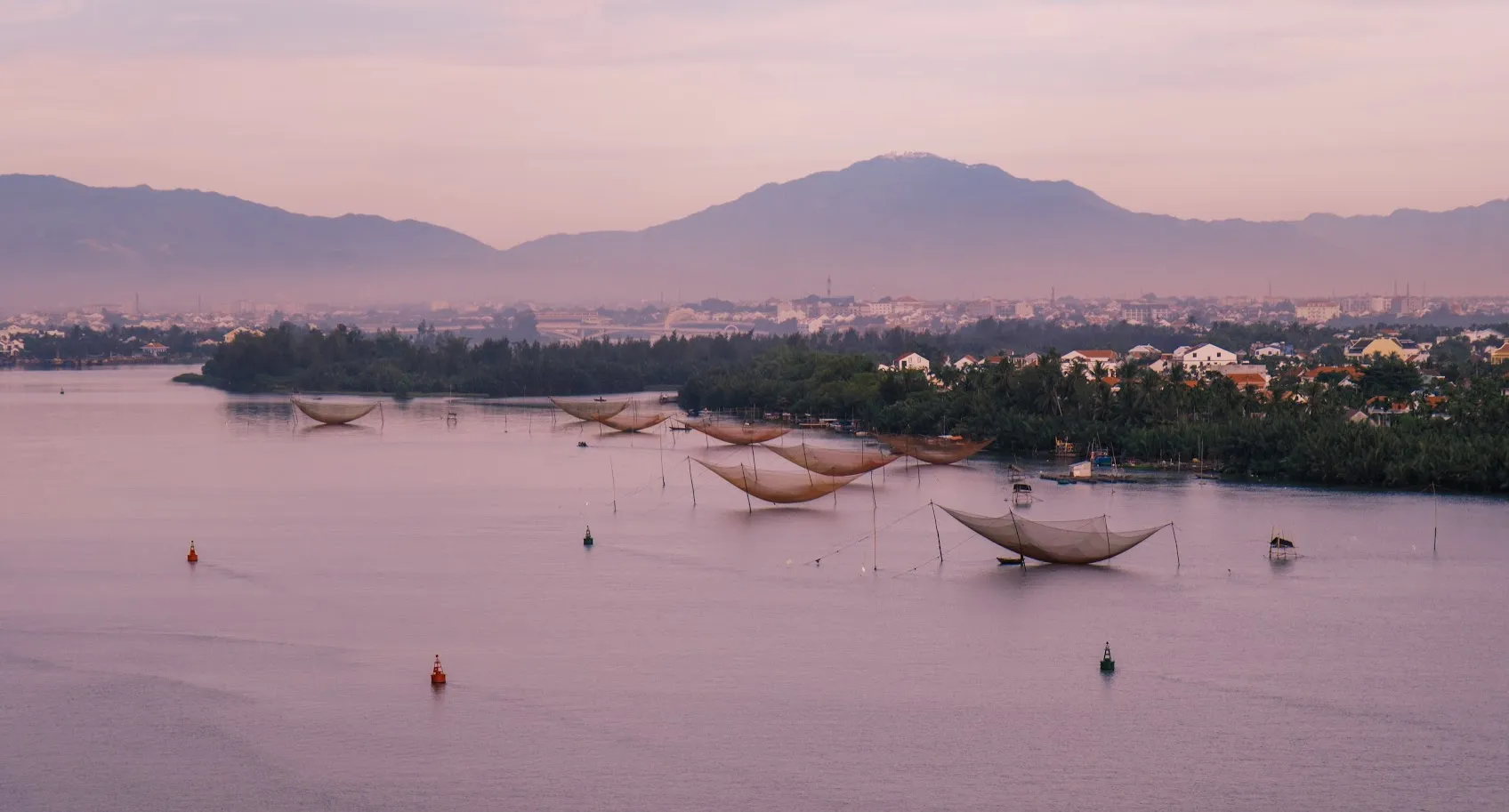
In the slender yet scenic stretch of Central Vietnam, despite its narrow terrain, the region's proximity to the East Sea and dense river networks make it a place blessed with beautiful landscapes and a plentiful supply of seafood from the sea. Born and raised in such a distinctive region, people naturally forge a strong bond with the rivers and the sea. River-based livelihoods have become an enduring tradition passed down through generations.
In many provinces of Central Vietnam, numerous families have depended on the waterways for their livelihood since their ancestors’ time. From aquaculture and fishing to transporting goods and passengers by boat, all these jobs are collectively known as "river trades" - a livelihood that has sustained generations here.
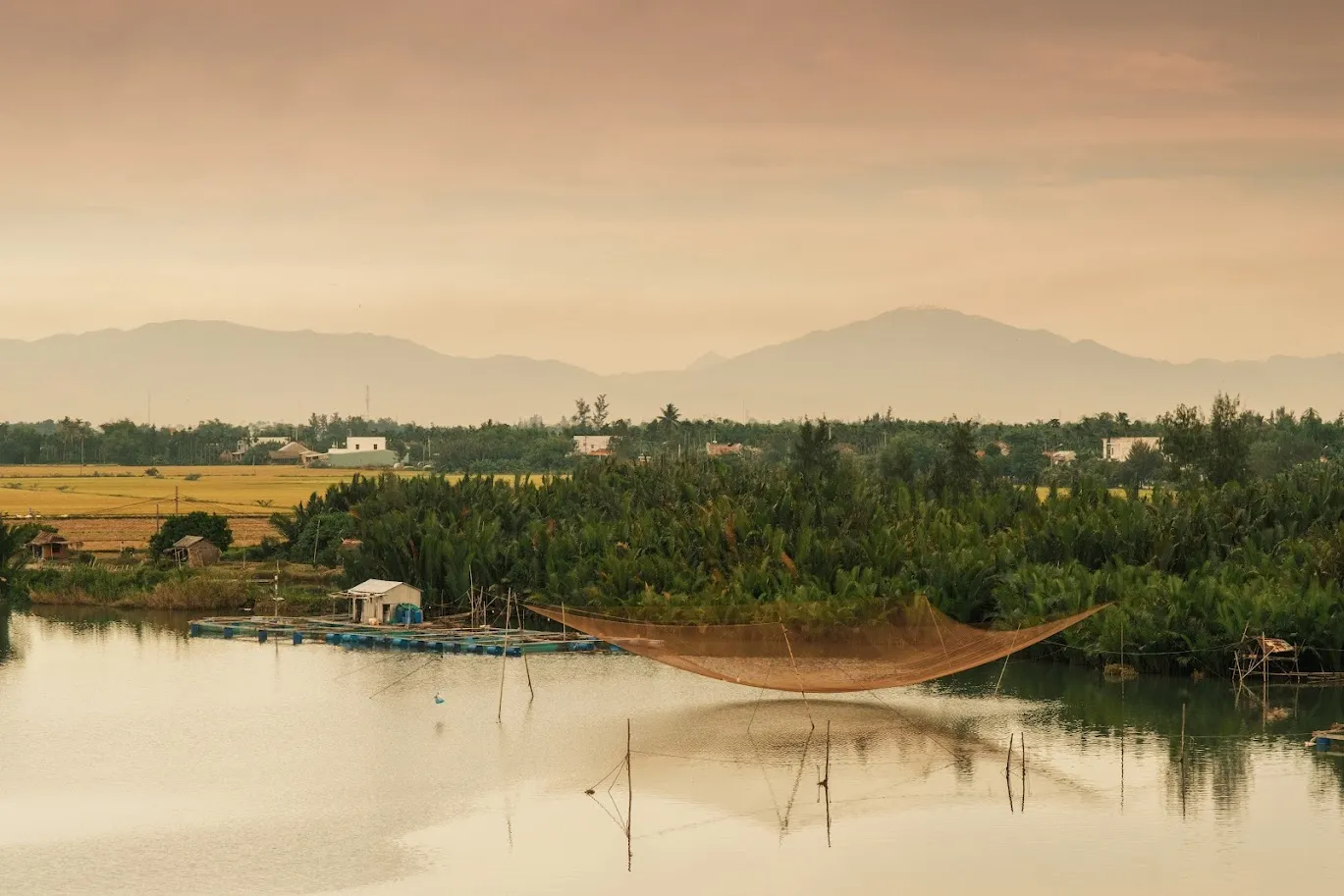
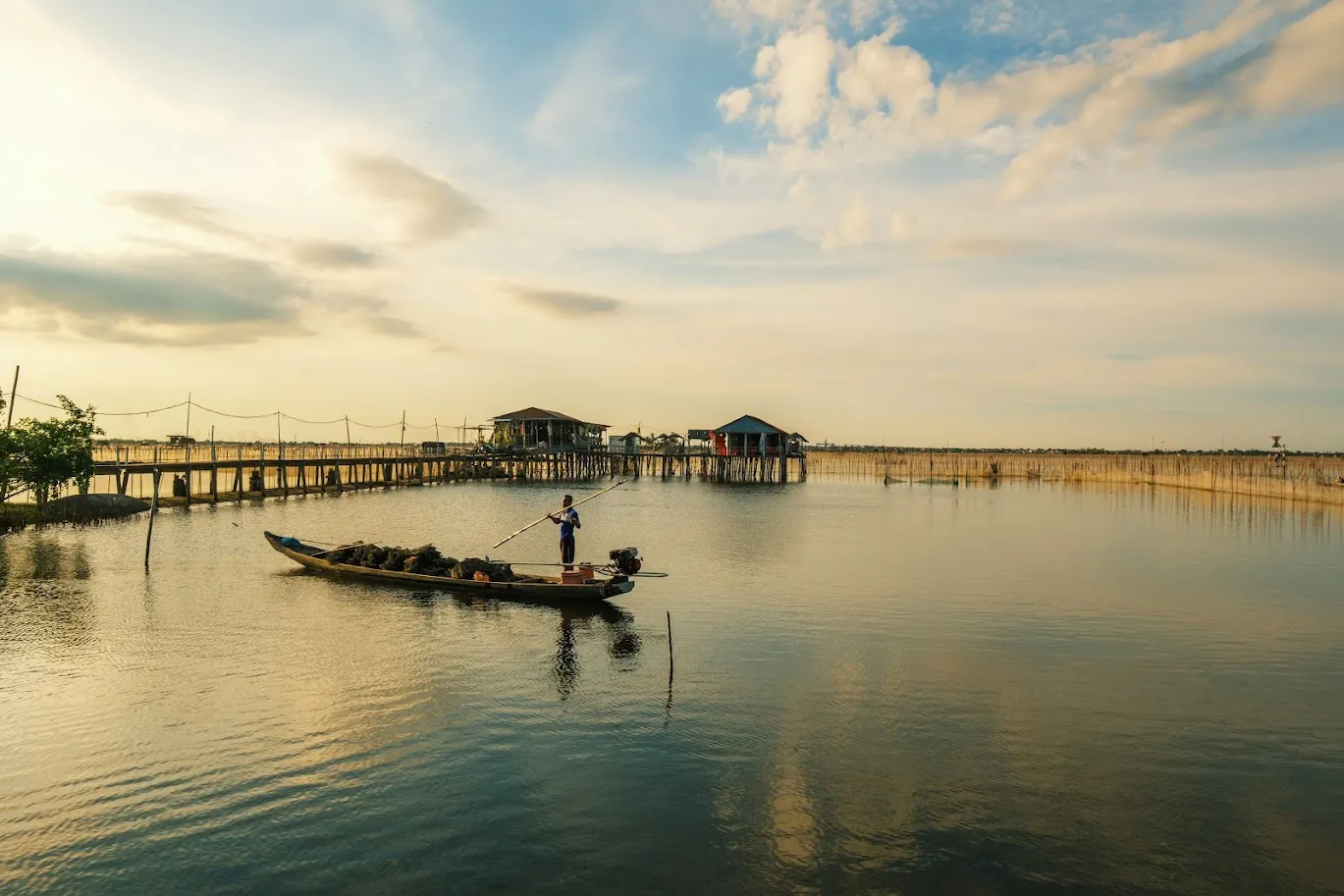
"Each rhythm of life flows like the quiet strokes of a paddle across the water, filled with untold stories of survival."
Like farming, river-based livelihoods rely on the natural resources available, but they are equally subject to the whims of nature - weather, seasons, and river currents. This means that river work doesn’t always provide a stable income.
At the crack of dawn under Cua Dai Bridge spanning the Thu Bon River in Quang Nam, boats head out to check the nets. Large nets are spread across the river, and from a distance, they resemble giant squid tentacles. Depending on the season, the nets can be full of fish, as the fish season typically runs from early to mid-year. After that, the silt-laden Thu Bon River prevents sea fish from entering, leaving the nets empty. It’s only around September, when the first floods come, that the river welcomes a new fish season—marked by the bustling harvest of river fish at the end of the year.
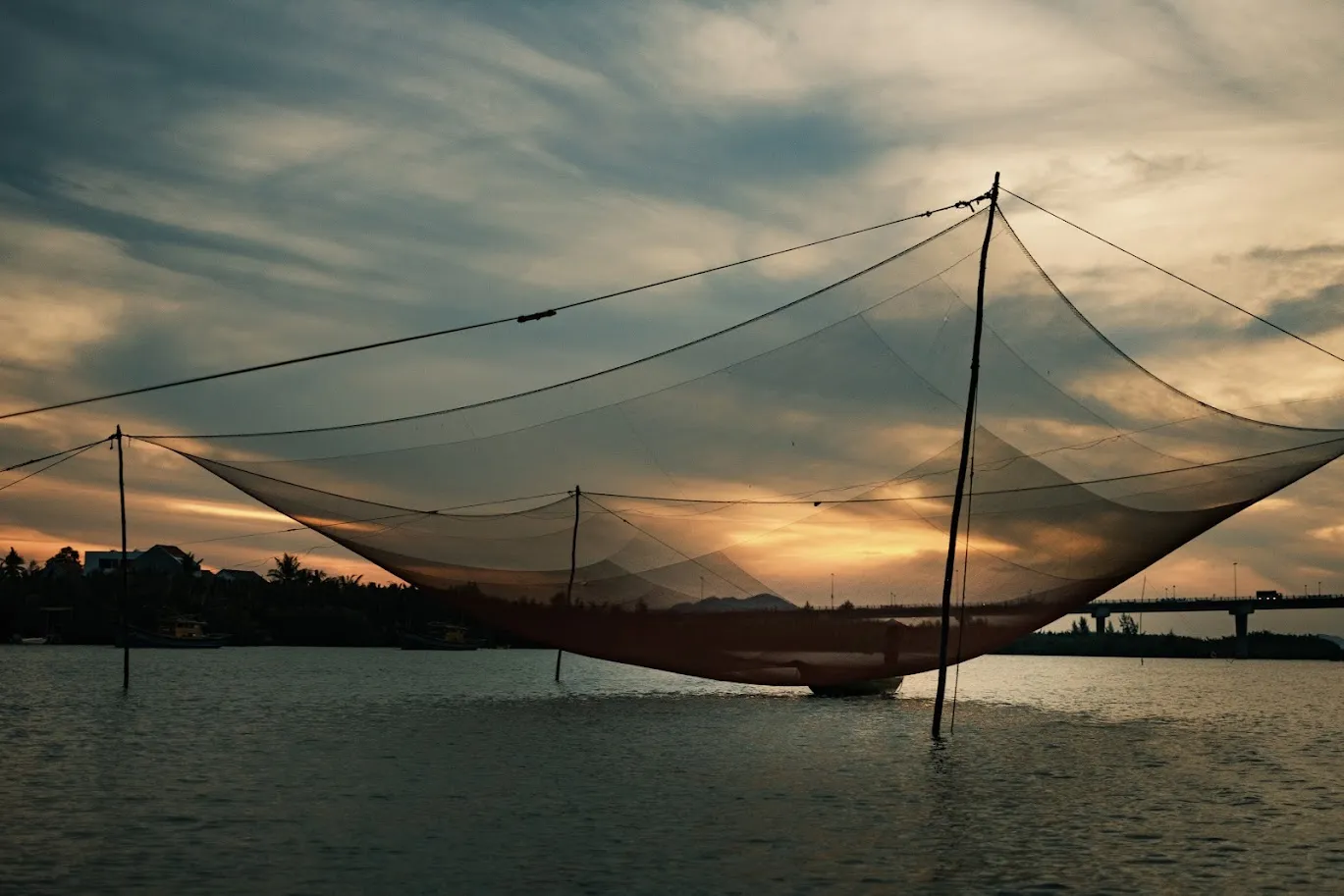
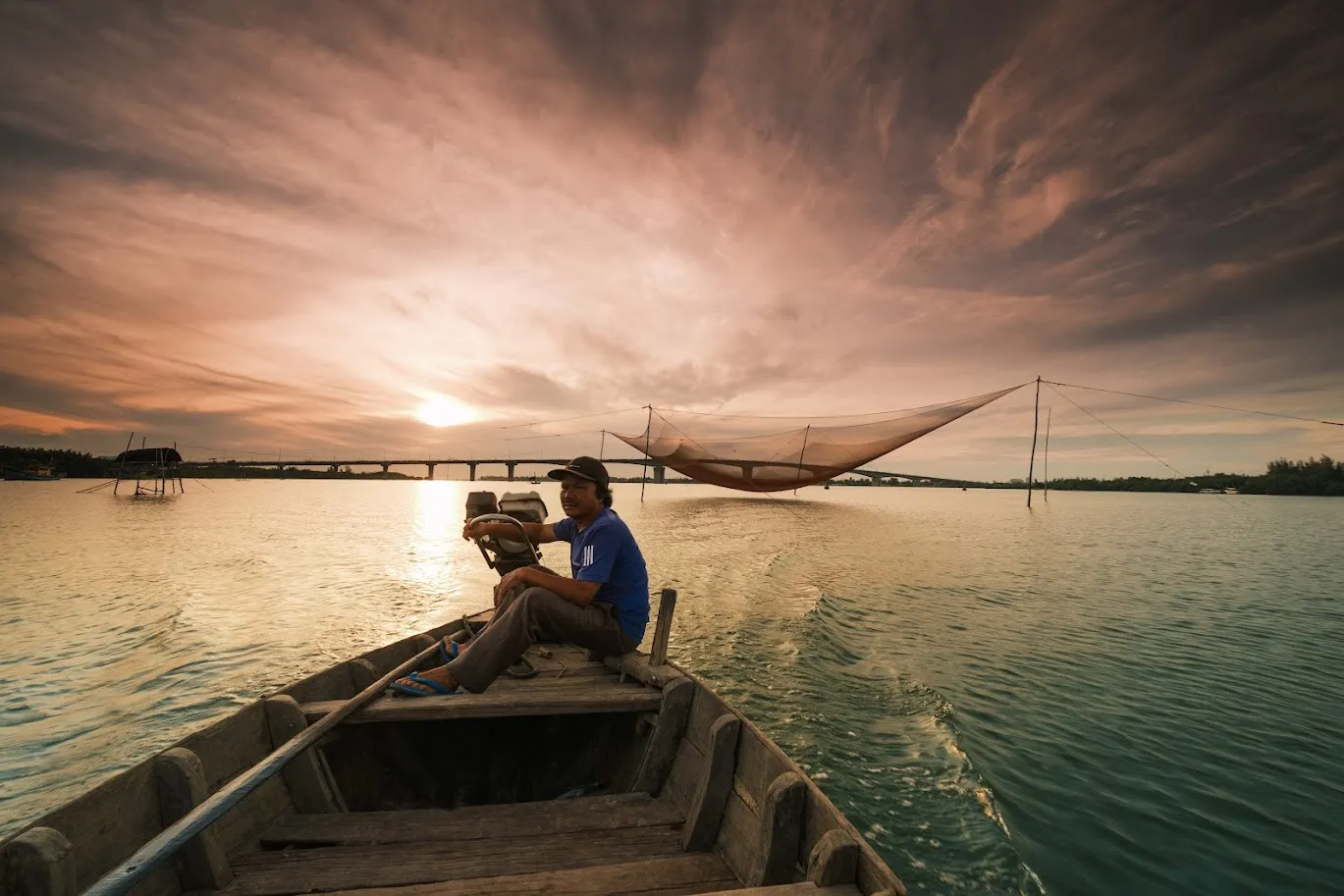
The bounty of seafood from the sea depends largely on the time of year. Experienced fishermen in estuaries know the "golden season" for each fish species and which type of net to use. Similarly, those working in water transport must learn to read the weather and avoid navigating during flood seasons, storms, or heavy rains to ensure the safety of both passengers and goods. Though the river trade may seem serene, it demands a great deal of experience to navigate nature's challenges and stay committed to a trade so closely tied to the whims of the natural world.
"Waterways are naturally intertwined with the lives of the people here, just as the people are connected to their river-based livelihoods.
Yet, the river trade is far from stable. A poor flood season or a strong storm can push many families into hardship.”
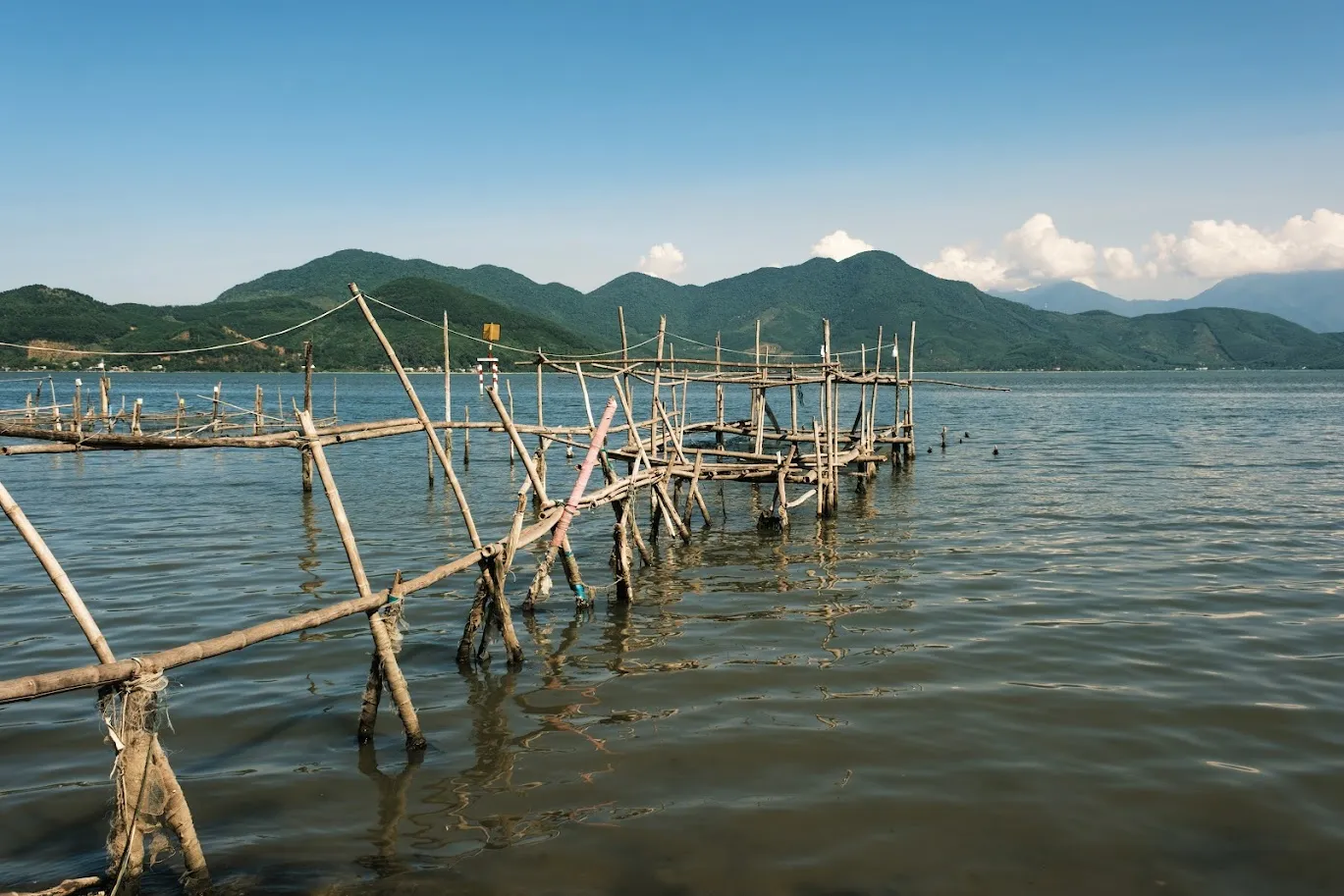
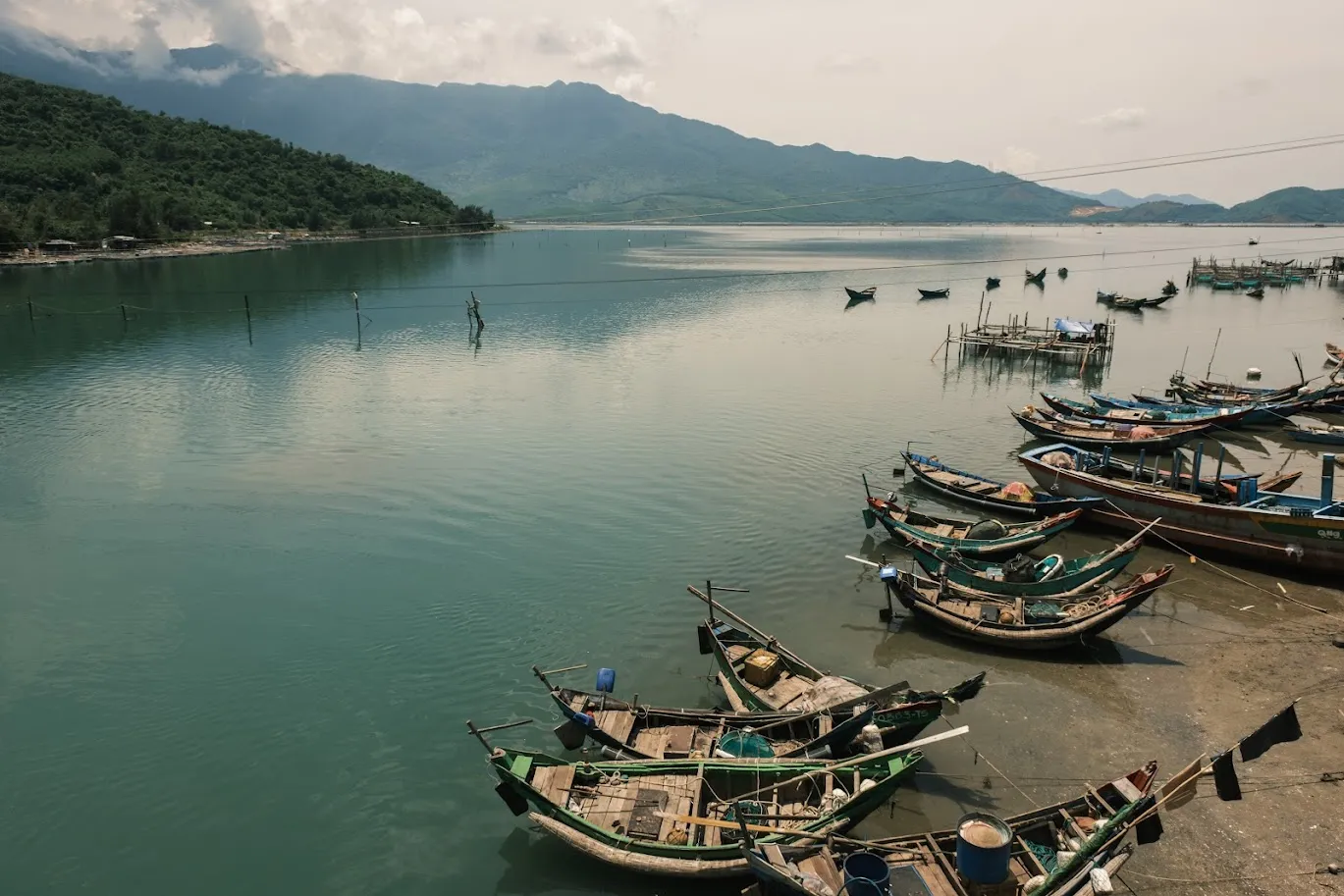
Along the banks near the old Cam Kim Bridge in Hoi An, Quang Nam, many families still rely on the river trade. However, for them now, it is no longer the primary source of income that sustains the entire household.
In this land with harsh weather conditions like Central Vietnam, it is common for homes to be damaged and for fish to be scarce due to floods. As a result, in addition to fishing on the river in front of their homes, many families have taken on other manual labor jobs, such as working as construction workers or factory hands, to ensure a more stable income without depending on nature's unpredictable whims.
"The river gives the people a livelihood, but it does not guarantee their income or quality of life, especially as storms and floods increase with each passing year."
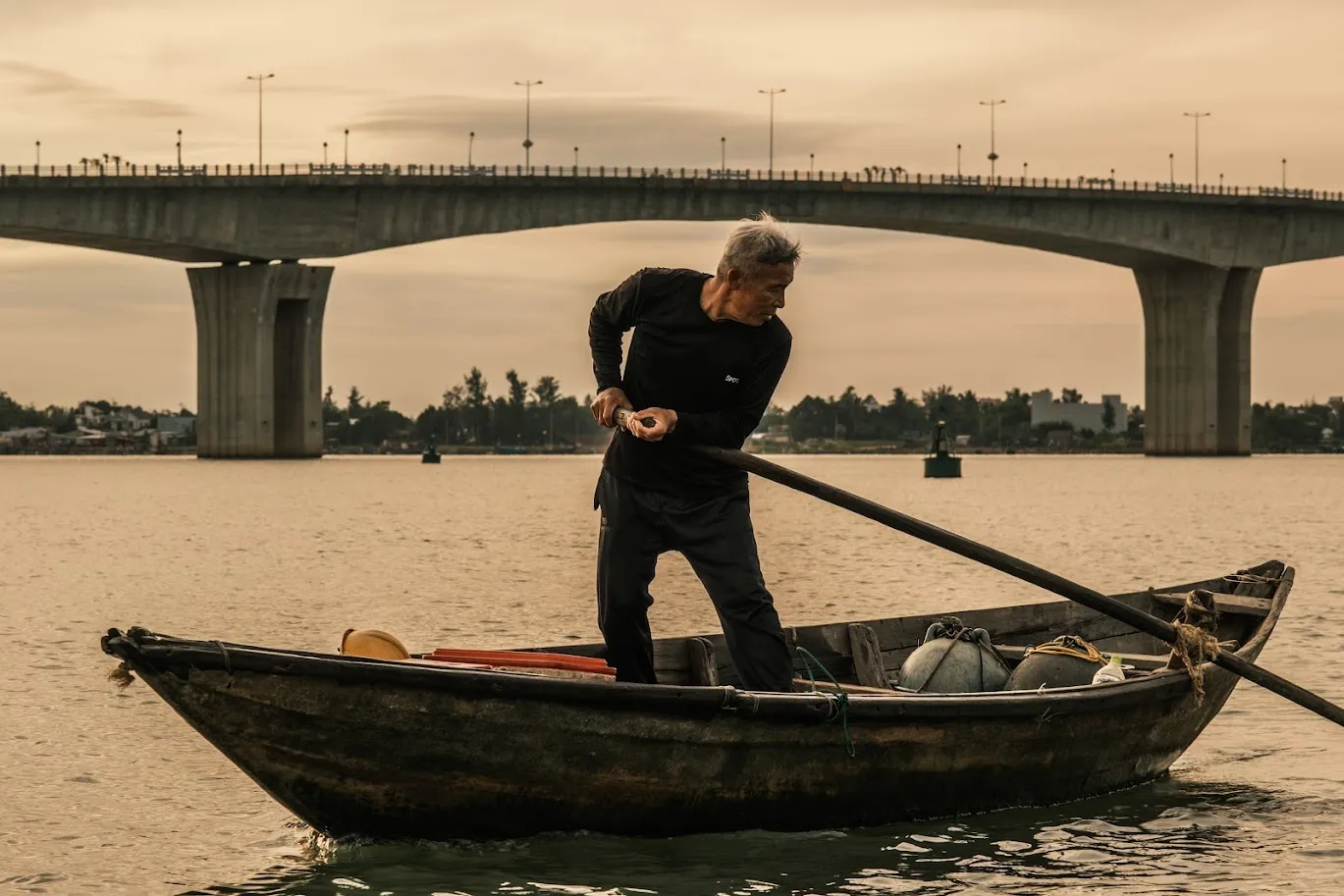
The people of Central Vietnam have lived alongside the waterways for generations. To them, each day feels like part of the river’s endless cycle. Watching them navigate the rivers on boats and canoes, we can sense their resilience and strength, but we also see the precariousness of their situation. From floods and fluctuating water levels to climate change, the people are trapped in a cycle that is hard to escape.
With so much uncertainty and dependence on nature, can river-based livelihoods remain sustainable? And with the challenges nature continues to impose, how can we preserve and develop this traditional trade for the future? These are the questions that weigh on our minds as we leave this resilient and enduring land.
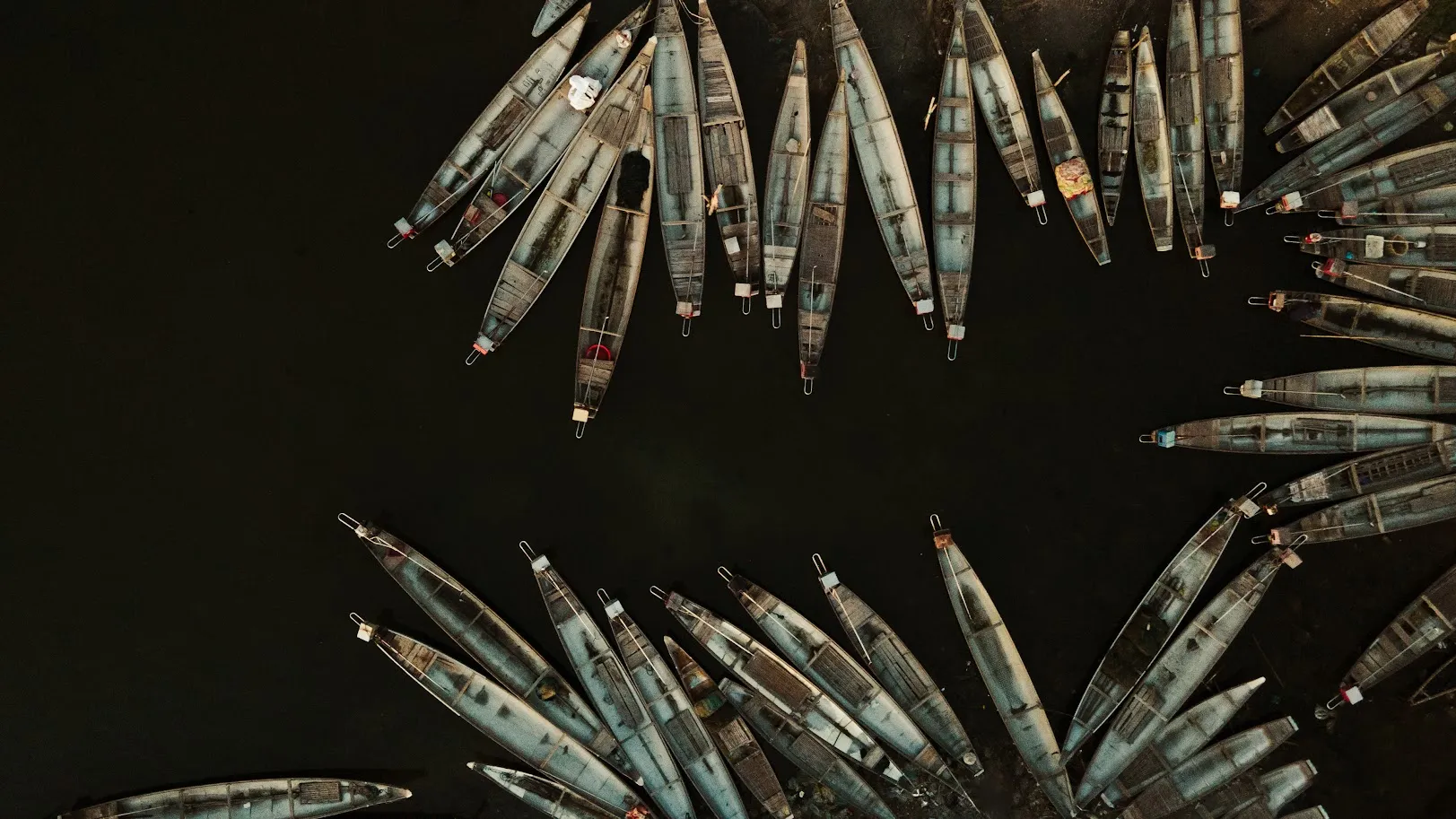
—------
CREDIT:
- Photography: Luan Nguyen
- Content: Giang Huynh
- Design: Luan Nguyen




















